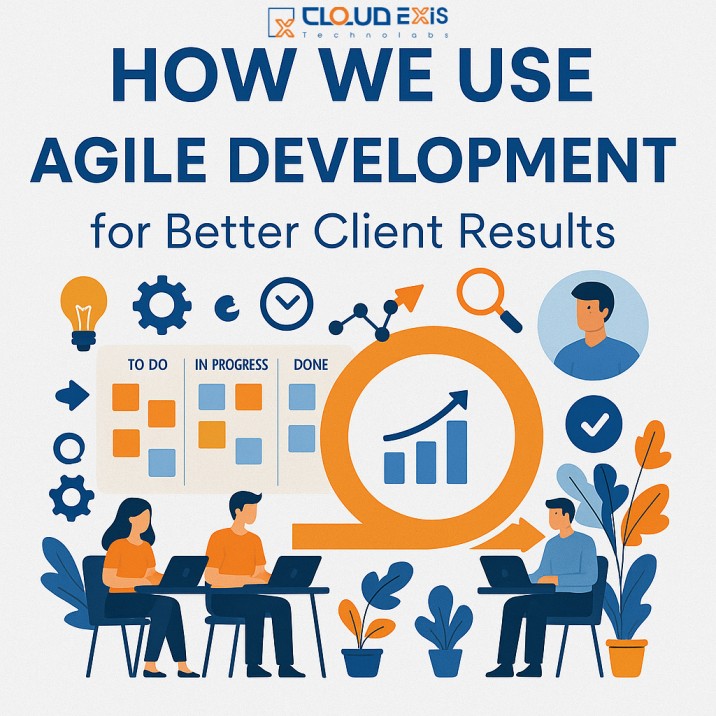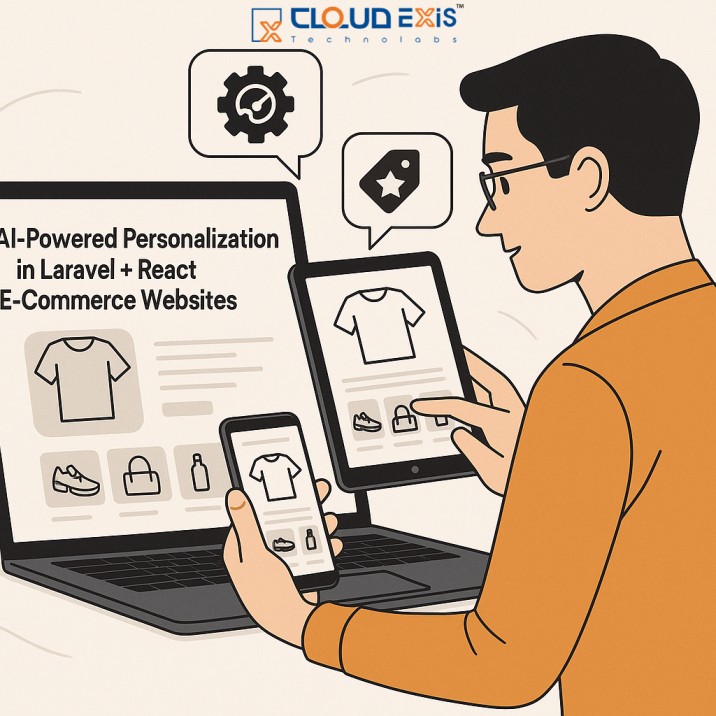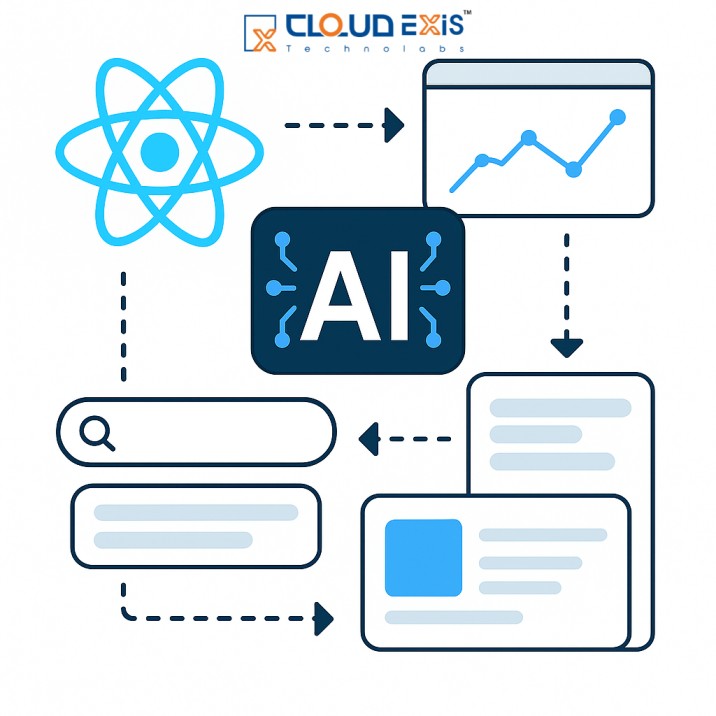Introduction: Why Agile Matters More Than Ever
In today’s fast-moving digital economy, building SaaS platforms and digital products isn’t just about writing code—it’s about delivering real business value quickly, consistently, and cost-effectively. At Cloudexis Technolabs, Agile development isn’t just a buzzword—it’s the backbone of how we deliver results that clients can see, use, and grow with.
In this blog, we’ll walk you through:
What Agile development is (in practical terms)
How we apply it to SaaS and product development
Real-world examples of the impact it has on timelines, budgets, and user satisfaction
Why our clients prefer Agile over traditional models
1. What Is Agile Development (and Why SaaS Needs It)?
Agile development is a methodology that promotes:
Iterative development (breaking work into small, manageable units)
Frequent releases (so clients see progress faster)
Continuous feedback (ensuring alignment with client goals)
Cross-functional collaboration (designers, developers, testers all working closely)
For SaaS and product engineering, this approach is especially valuable because:
SaaS products evolve constantly
Feedback loops are critical to product-market fit
Speed-to-market often determines competitive advantage
In short? Agile helps you build the right product—not just build the product right.
2. Agile vs Traditional (Waterfall) Development
| Feature | Waterfall Model | Agile Model |
|---|---|---|
| Delivery | One big launch | Iterative releases |
| Feedback | At the end | Continuous |
| Client Involvement | Minimal | High |
| Flexibility | Low (fixed scope) | High (adaptive scope) |
| Risk | Higher | Controlled through sprints |
Example:
Let’s say you’re building a SaaS tool for HR onboarding.
With Waterfall, you’d wait 3–6 months to test your idea.
With Agile, your MVP could go live in 4–6 weeks, with improvements rolling out weekly based on feedback.
3. Our Agile Workflow at Cloudexis Technolabs
We’ve refined our process over 10+ years and hundreds of projects. Here’s how we deliver using Agile:
A. Discovery & Planning (Sprint 0)
Define core product goals
Identify user personas
Prioritize features (MVP vs Phase 2/3)
Create initial wireframes and architecture
📌 Tools we use: Miro, Figma, Jira, Notion
B. Sprint Planning
We break the product roadmap into 2-week sprints. Each sprint includes:
A sprint backlog (the to-do list)
Time estimates and task ownership
Clear deliverables with success criteria
C. Design + Development in Sync
Instead of handing over full designs upfront, we:
Design in parallel with development
Share clickable prototypes for client feedback
Iterate on UX/UI based on actual usage
D. Daily Standups & Weekly Demos
15-minute team huddles each day to stay aligned
Weekly demos to show what’s working—and what needs tweaking
Clients are invited to participate or view recordings
E. Continuous Testing & Integration
Each sprint includes automated and manual QA
Code is pushed to staging environments for review
Bugs are tracked and prioritized immediately
🧪 Tools we use: GitLab CI/CD, Postman, Selenium, BrowserStack
F. Sprint Review & Retrospective
Discuss what went well, what didn’t, and what can improve
Update backlog for the next sprint
Adjust scope based on real-time feedback and data
4. Agile in Action: A SaaS Case Study
🎯 Client Goal: Build a subscription-based Learning Management System (LMS) for remote teams
🛠️ Solution:
We defined MVP features: Course Creation, Role Management, Content Upload, and Payment Integration
Delivered MVP in 5 sprints (10 weeks)
Added AI-powered content suggestions in sprint 6 based on client vision
📈 Results:
First paying customers acquired within 3 months
Client reduced churn rate by 27% in 6 months
Platform now supports 20K+ active users with minimal downtime
5. How Clients Benefit from Our Agile Approach
✅ Faster Time-to-Market
Your idea gets in front of users faster—ideal for testing and scaling.
✅ Better Budget Control
You pay only for what’s built in each sprint. If priorities change, we pivot without wasting effort or cost.
✅ Real-Time Visibility
We give clients full transparency into:
What’s being worked on
What’s done
What’s next
Via shared tools like Jira, Notion, GitHub, and weekly update calls.
✅ Scalability Built-In
We structure projects so that additional features or integrations (like APIs, third-party services, mobile apps) can be added without rewriting core systems.
✅ User-Centric Improvements
We use user feedback (even during the build!) to enhance features and UX iteratively.
6. Common Challenges & How We Tackle Them
| Challenge | Our Solution |
|---|---|
| Changing requirements | Agile welcomes change—we reprioritize in every sprint |
| Communication gaps | Weekly calls, Slack channels, and sprint demos |
| Scaling teams | Modular architecture + easy onboarding documentation |
| Post-launch support | We offer maintenance sprints and phased rollout plans |
7. Agile + DevOps = Even Faster Results
We combine Agile with DevOps practices like:
Continuous deployment
Auto-scaling infrastructure
Monitoring and rollback systems
This means not just faster development, but faster delivery to real users—with stability.
🚀 Example: One client pushed 15 updates in 1 month without downtime using our Agile + DevOps pipeline.
8. Final Thoughts: Why Agile Works for SaaS & Digital Products
Agile isn’t just a project method—it’s a mindset. It keeps your product evolving, your team focused, and your users engaged.
At Cloudexis Technolabs, we’re proud to help SaaS founders and digital product innovators:
Launch faster
Iterate smarter
Scale easier
We don’t just write code—we deliver outcomes.
✅ Looking to build your SaaS product the Agile way?
Let’s talk.
Book a free 30-minute consultation with our product strategist:
👉 https://calendly.com/vishal-cloudexistechnolabs/30min






